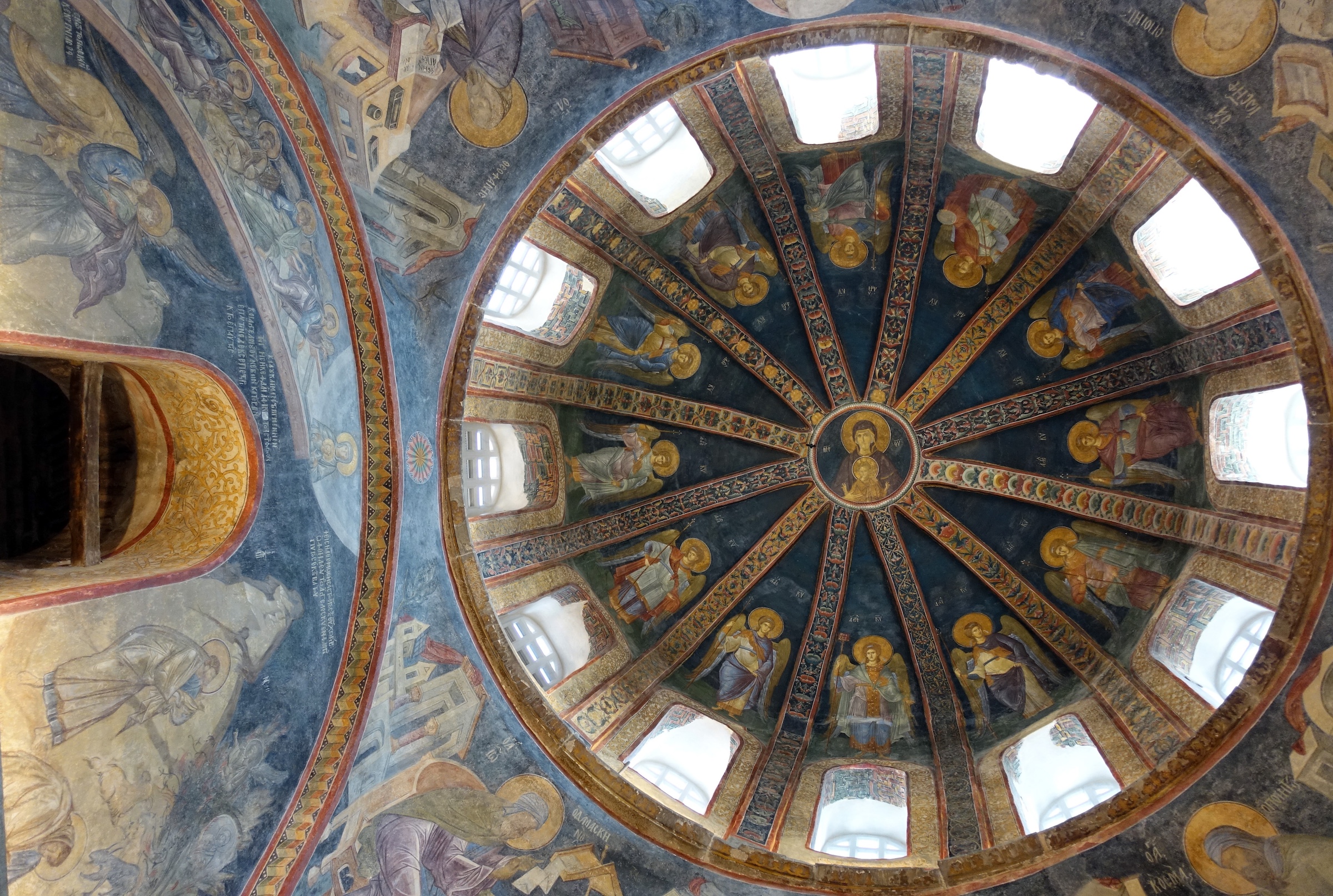ISTANBUL — When the 11th-century Chora Church was ordered to be reconverted into a mosque in 2020, many feared for the fate of its richly decorated interior, which features some of the world’s finest Late Byzantine-era mosaics and frescoes. After a tense four-year wait while the building was closed for restoration, it reopened on May 6 as the Kariye Mosque with its treasured works of Christian art — except for a handful of pieces in the small central nave that has been set aside for the men’s prayer hall, off-limits to non-Muslims and women — again open to public view.
The reopening of both Chora and the world-famous Hagia Sophia to Islamic prayers after decades as museums was driven by Turkey’s President Recep Tayyip Erdoğan, who hailed his latter move as a victory for Muslims worldwide and has used references to the Byzantine Empire to disparage his political opponents. A continuation of the Roman Empire, the Byzantines ruled over an expansive realm from 330 to 1453, when their capital Constantinople (previously Byzantium, now Istanbul) fell to the Ottomans.
“There’s a Byzantine layer under everything in Istanbul — you can’t understand the city without it — but Byzantium is not always seen as part of Istanbul’s story,” art historian Sedat Bornovalı, an associate professor in Architecture at Istanbul Nişantaşı University who is also the former head of the Istanbul Chamber of Tourist Guides, told Hyperallergic.
Visible traces of the once-dominant Byzantine presence in Istanbul have been largely lost to time and urban development over the centuries; others have been repurposed, forgotten, or worse. The historically formidable city walls were subjected to a botched restoration in the 1980s. A luxury hotel was built over the remains of the Great Palace of Constantinople. Until a few years ago, the ruins of the Church of St. Polyeuctus, which once rivaled Hagia Sophia in grandeur, were almost swallowed up by trash-strewn weeds.


Today, St. Polyeuctus, the city walls, the Valens Aqueduct, and other Byzantine sites are being restored, part of a flurry of culture heritage projects led by the opposition-run Istanbul Metropolitan Municipality since it took office in 2019, promising a more all-embracing approach to the city’s past. But the municipality has no authority over Istanbul’s many Byzantine-churches-turned-Ottoman-mosques like Chora and Hagia Sophia, which are overseen by either the Directorate of Religious Affairs if they are active mosques or the Directorate General of Foundations if they are not.
The church of the fifth-century Stoudios Monastery, by some accounts the most important monastic foundation of the Byzantine era, is among the properties rousing the most concern among heritage experts.
“The plan of the Foundations Directorate is to ‘restore’ the building as a mosque, which means a very heavy restoration which will result in the loss of its original character,” Professor Engin Akyürek, the director of the Sevgi Gönül Center for Byzantine Studies at Istanbul’s Koç University, told Hyperallergic.
Informational signs on the hoarding around the site refer to the project almost exclusively as the İmrahor İlyas Bey Mosque, as it became known after the Ottoman conquest, with the monastery getting only a brief mention.

A similar flattening of multilayered history has already happened at many churches-turned-mosques, as well as at the Palace of the Porphyrogenitus (now known as Tekfur Palace), which was built into Istanbul’s land walls in the late 13th century. Its restoration under the previous Istanbul municipality administration resulted in “quite an ideological repurposing, as if it did not exist before the Ottomans,” said Bornovalı. “Turning it into a museum of [Ottoman] tiles, that are not even from there, was not a good choice.”
Ideological considerations have long played a role in what gets excavated, researched, preserved, exhibited, and restored in Turkey. When the Turkish Republic was established in 1923, its founding President Mustafa Kemal Atatürk and other leading figures “had this Turkish history thesis which skipped all of the history of Byzantium,” Barış Altan, an architect from Turkey specializing in cultural heritage, told Hyperallergic.
“They were trying to find their roots in the Sumerians and the Hittites, and establish this idea that Turks had lived in Anatolia since ancient times,” said Altan, who is currently on the academic staff of the architectural conservation department at the Brandenburg University of Technology in Germany.

Research into Byzantium was mostly left to Western scholars in that early 20th century period, while the focus in the Erdoğan era has been on reclaiming the glories of the Ottoman past. Still, Altan thinks that the idea of a systematic neglect of Byzantine heritage is overblown, noting the number of Byzantine excavations happening around Turkey and the increase in young Turkish scholars working in the field.
Outside highly politicized symbols like Hagia Sophia, he says issues related to Byzantine sites are more likely due to problems besetting all of cultural heritage in Turkey: limited funding, a lack of strategic planning between multilayered and sometimes opposing stakeholders, and a “touristic understanding of culture” that has often led to destructive interventions aimed at making historic sites more attractive to income-generating visitors.
National or local government authorities that are financing restoration projects also sometimes exert pressure to speed up “work that actually requires time and patience,” added Akyürek. “They are always in a hurry to make their deeds visible to the public.”

